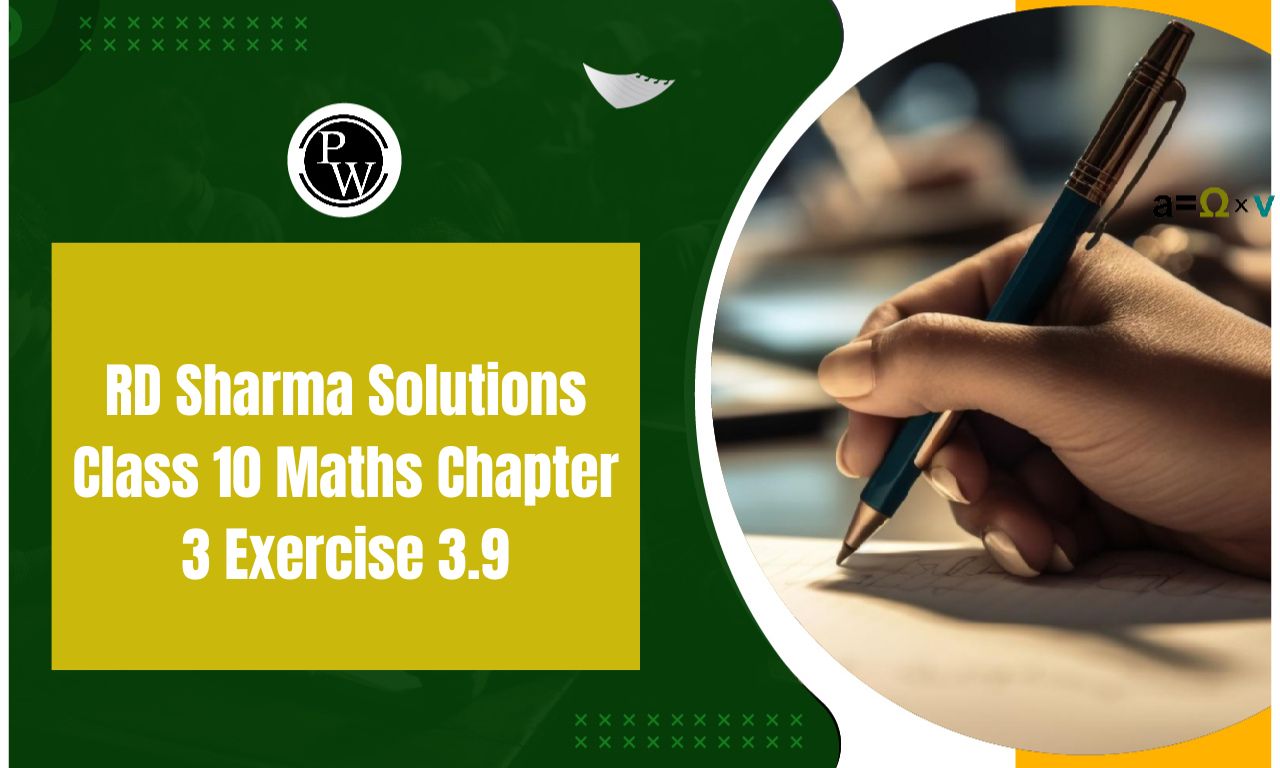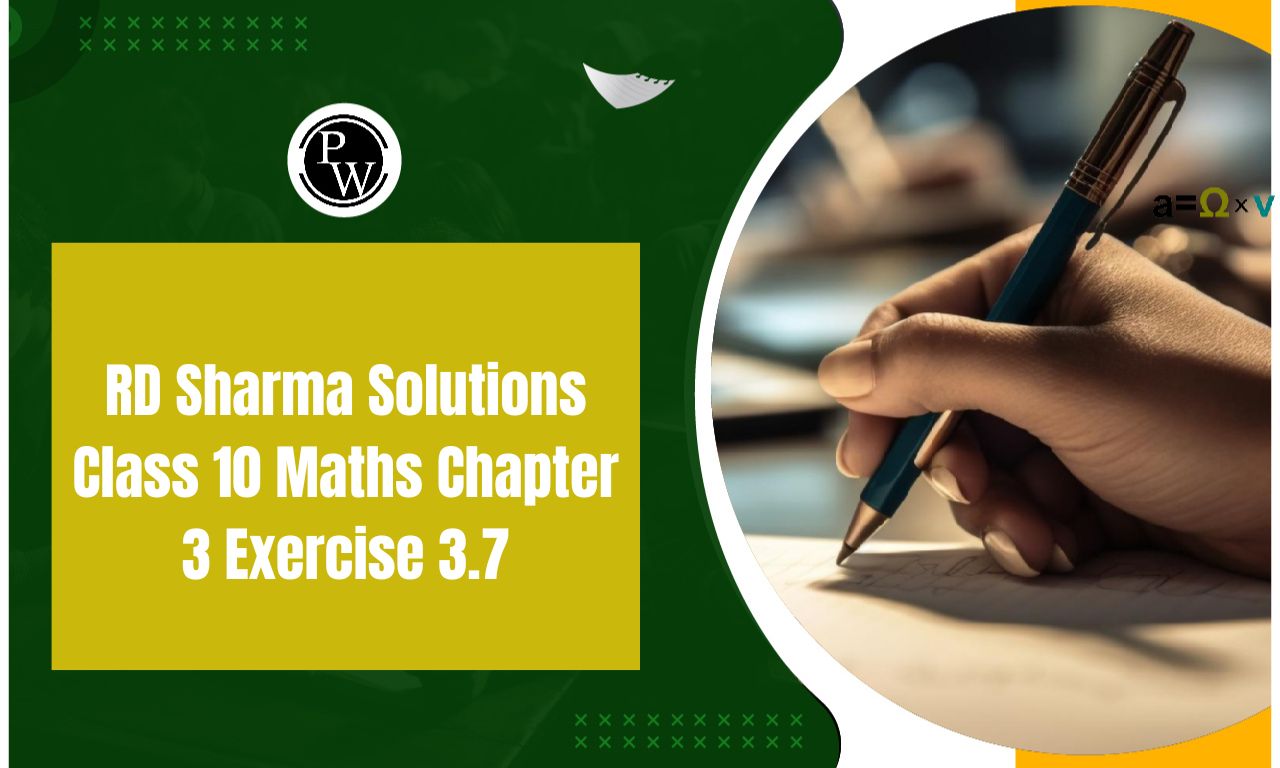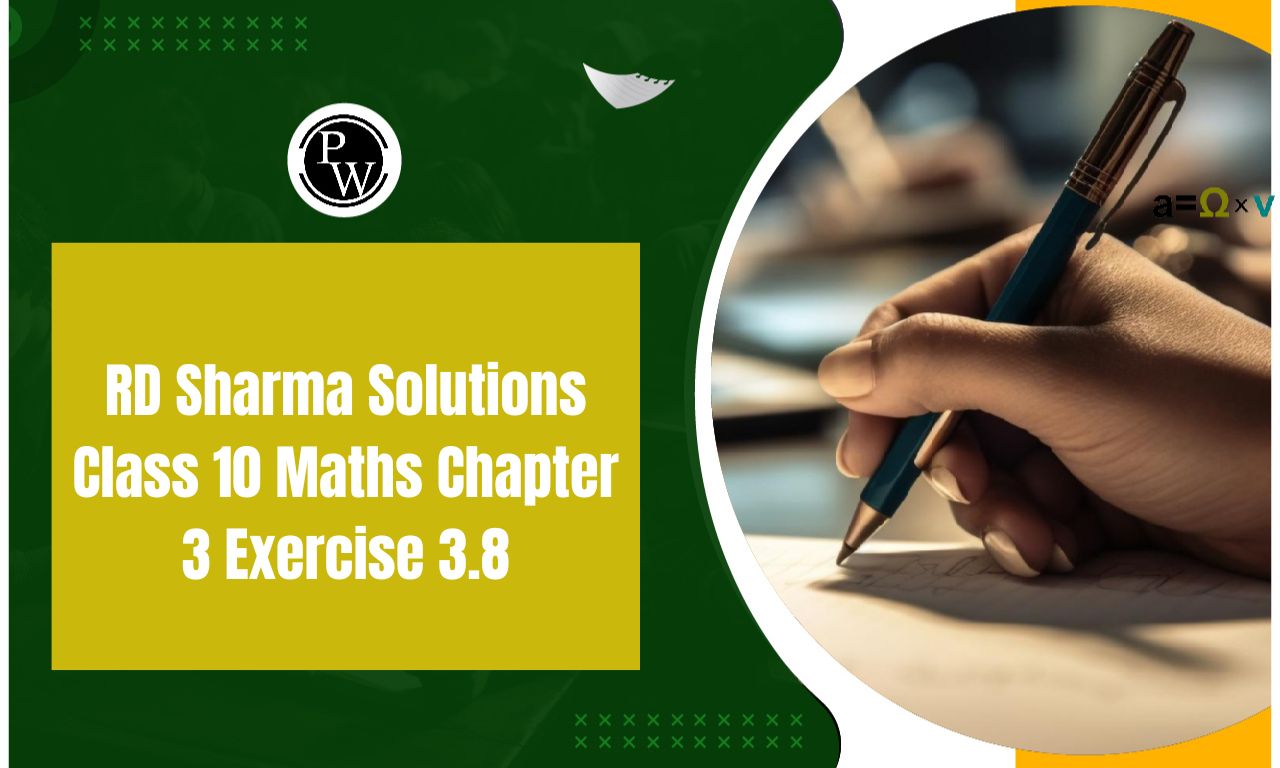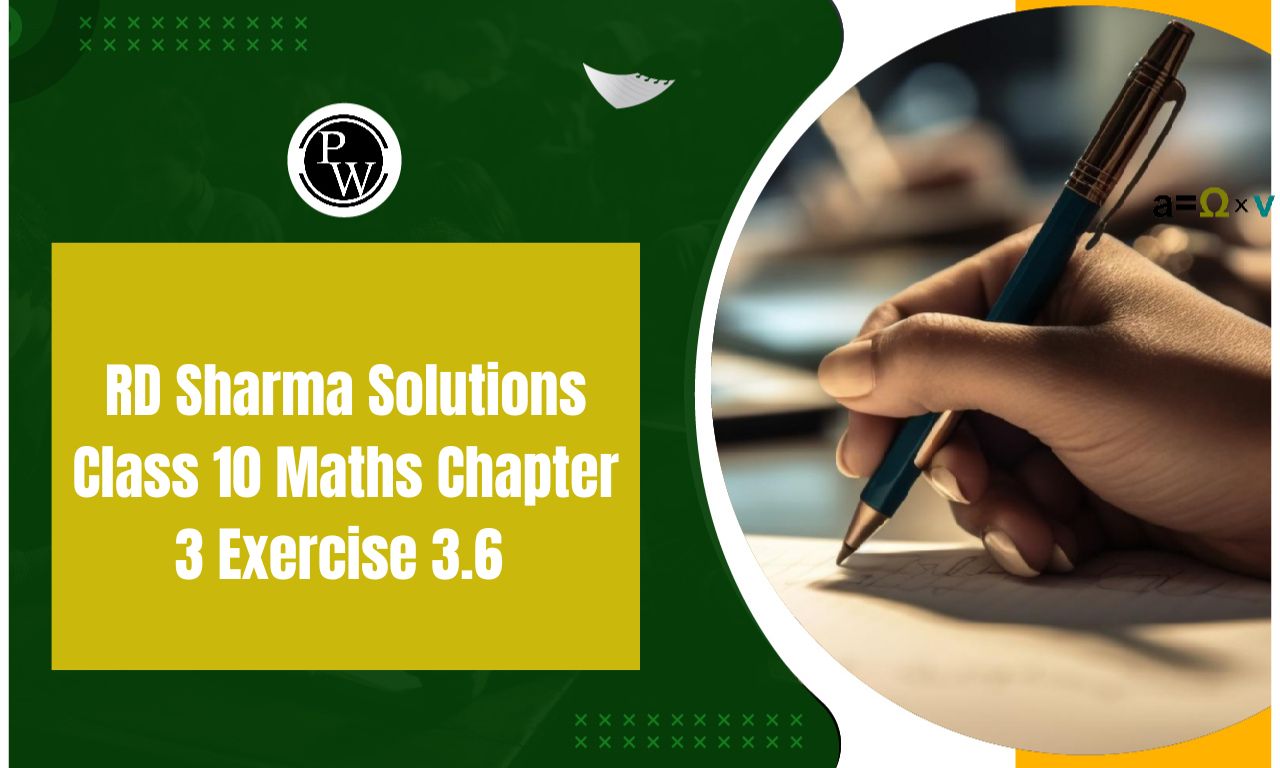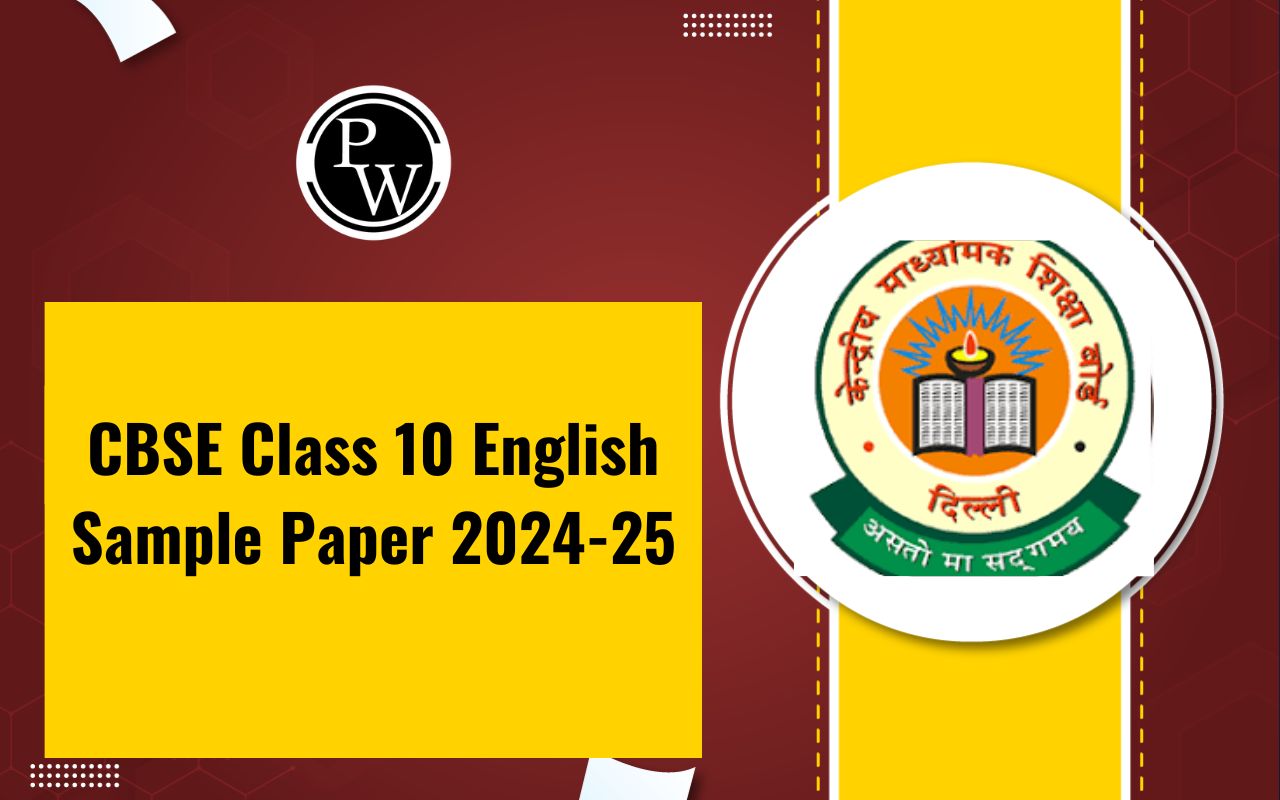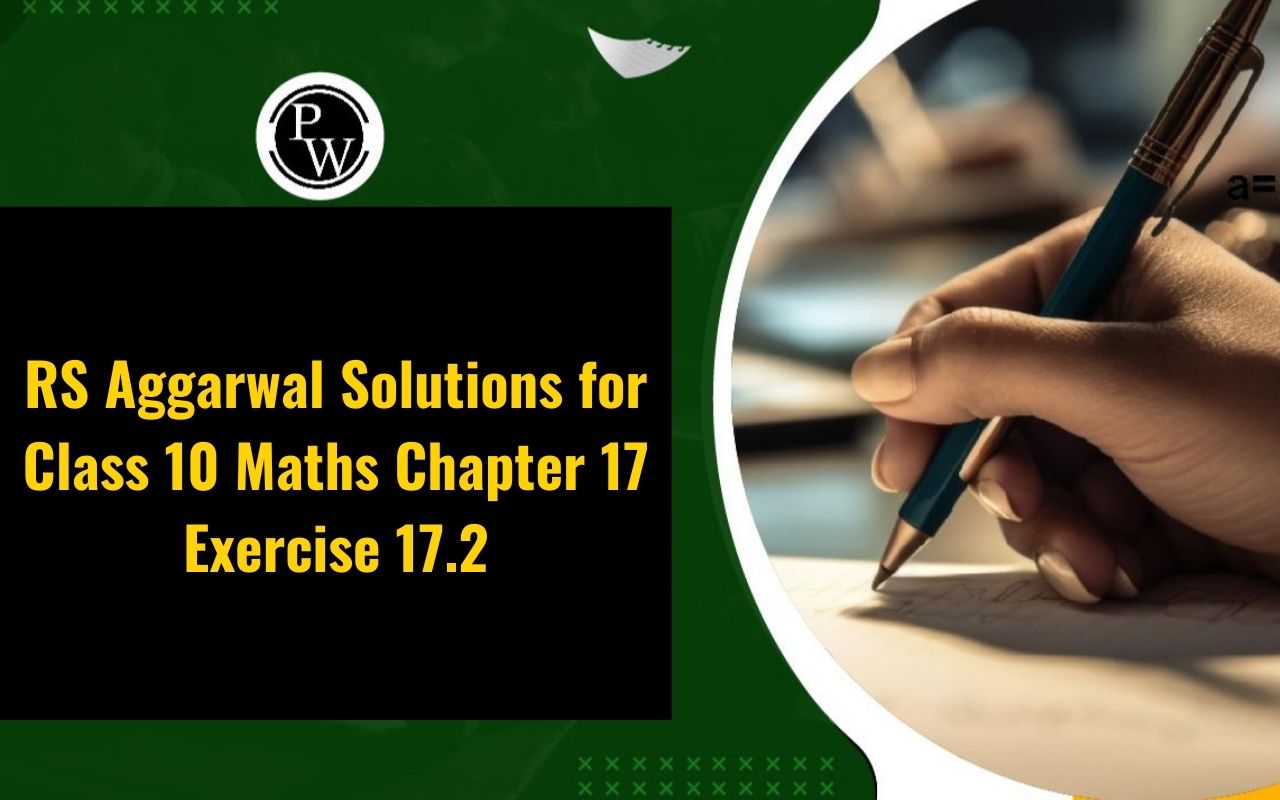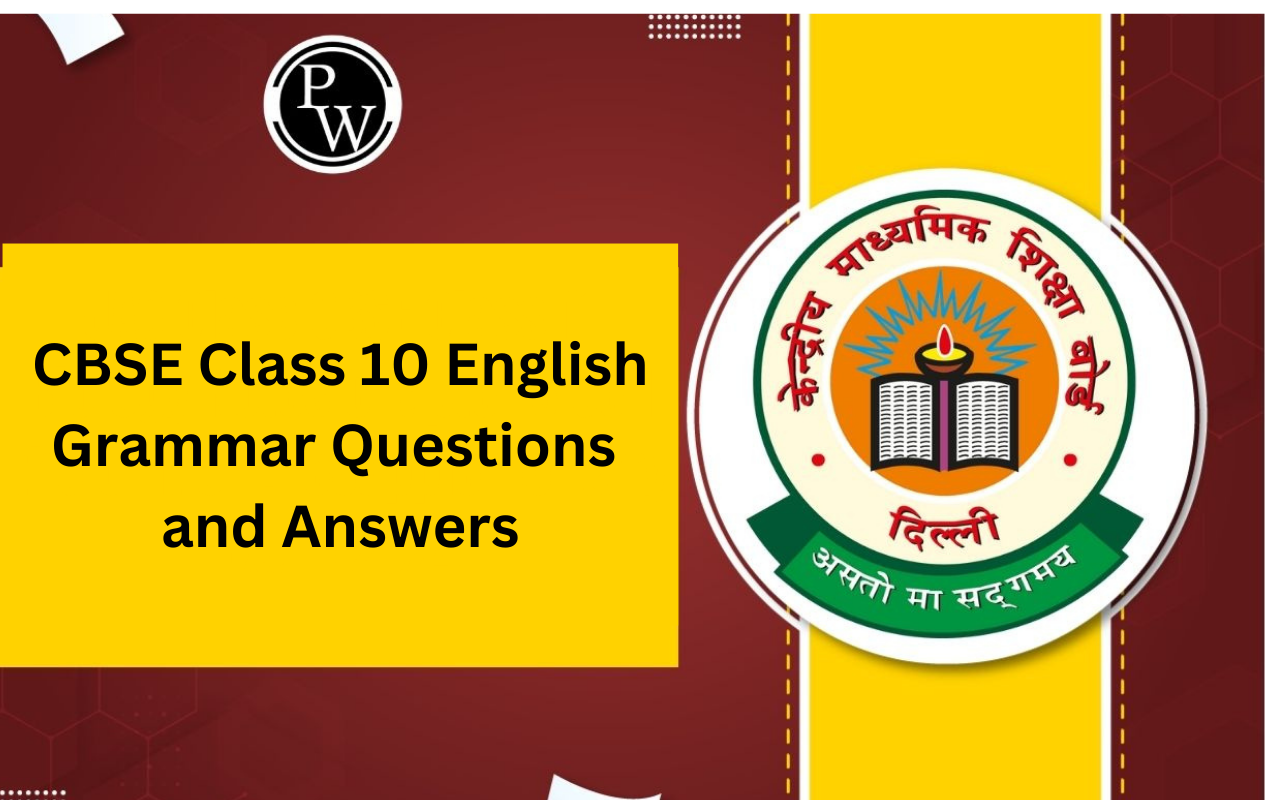
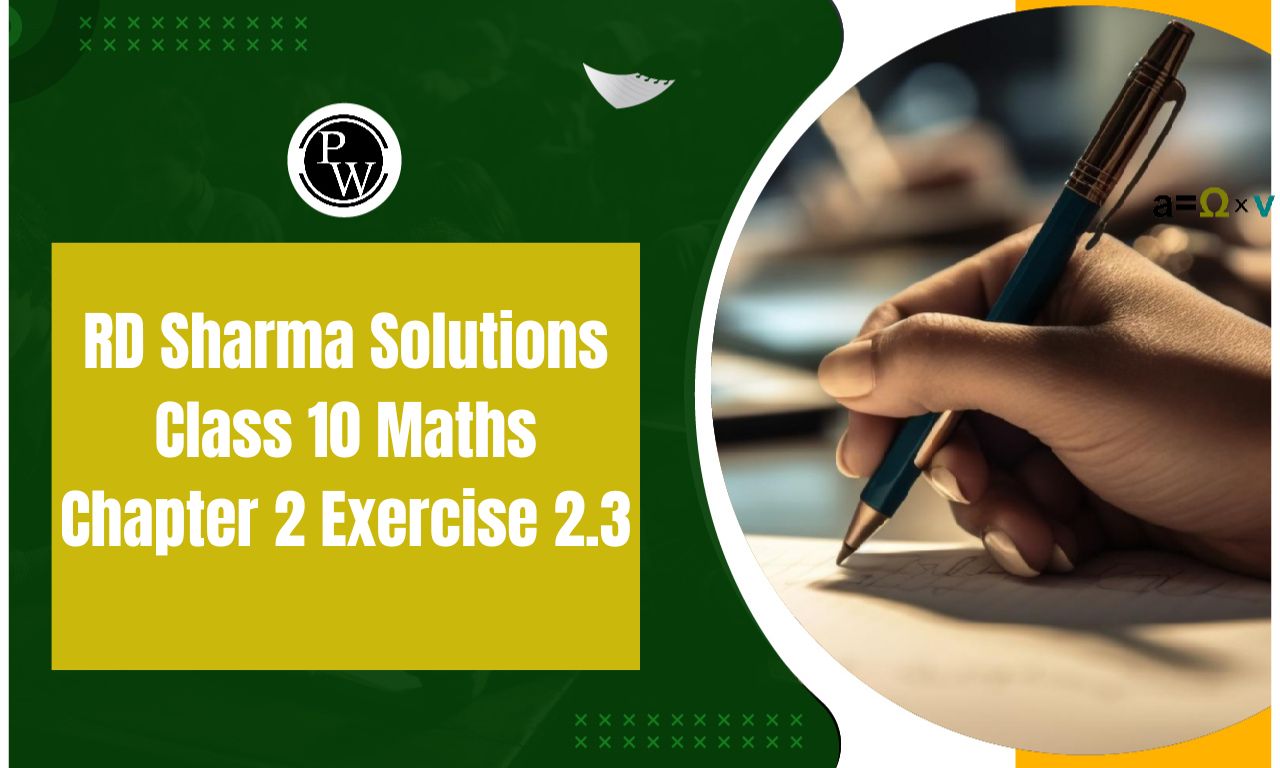
RD Sharma Solutions Class 10 Maths Chapter 2 Exercise 2.3: Chapter 2, Exercise 2.3 in RD Sharma's Class 10 Maths textbook focuses on polynomials, particularly on solving equations that involve finding the zeros of a polynomial.
This exercise emphasizes understanding the relationship between a polynomial's zeros and its coefficients, specifically for quadratic polynomials. Problems include calculating zeros and verifying that they satisfy the given polynomial. It also covers the concepts of factorization and the Factor Theorem, which helps students break down polynomials into simpler linear or quadratic factors, deepening their foundational understanding of algebraic expressions and polynomial functions.RD Sharma Solutions Class 10 Maths Chapter 2 Exercise 2.3 Overview
Students can better grasp basic polynomial principles by working through the problems in Exercise 2.3 of RD Sharma's Class 10 Maths Chapter 2. By working through these problems, students gain vital algebraic skills such as determining a polynomial's zeros and comprehending the connection between the zeros and the polynomial's coefficients. Their factorisation abilities, which are essential for decomposing complicated expressions and resolving equations, are strengthened by this practice. These skills are extremely significant in advanced mathematics since solving these issues provides a strong basis for more complex algebraic topics including quadratic equations, calculus, and graphing polynomial functions.RD Sharma Solutions Class 10 Maths Chapter 2 Exercise 2.3 PDF
Below, we have provided the PDF containing the RD Sharma Solutions for Class 10 Maths, specifically for Chapter 2, Exercise 2.3 on Polynomials. This exercise covers important concepts and problems related to polynomials, helping students enhance their understanding and problem-solving skills. By referring to this comprehensive solution guide, students can effectively tackle their assignments and prepare for exams with confidence. Feel free to download the PDF for detailed explanations and solutions.RD Sharma Solutions Class 10 Maths Chapter 2 Exercise 2.3 PDF
RD Sharma Solutions Class 10 Maths Chapter 2 Exercise 2.3 Polynomials
Below is the RD Sharma Solutions Class 10 Maths Chapter 2 Exercise 2.3 Polynomials -1. Apply division algorithm to find the quotient q(x) and remainder r(x) on dividing f(x) by g(x) in each of the following:
(i) f(x) = x 3 – 6x 2 + 11x – 6, g(x) = x 2 + x +1
Solution:
Given, f(x) = x 3 – 6x 2 +11x – 6, g(x) = x 2 +x + 1 Thus,
q(x) = x – 7 and r(x) = 17x +1
Thus,
q(x) = x – 7 and r(x) = 17x +1
(ii) f(x) = 10x 4 + 17x 3 – 62x 2 + 30x – 3, g(x) = 2x 2 + 7x + 1
Solution:
Given,
f(x) = 10x 4 + 17x 3 – 62x 2 + 30x – 3 and g(x) = 2x 2 + 7x + 1

Thus,
q(x) = 5x 2 – 9x – 2 and r(x) = 53x – 1(iii) f(x) = 4x 3 + 8x 2 + 8x + 7, g(x)= 2x 2 – x + 1
Solution:
Given, f(x) = 4x 3 + 8x 2 + 8x + 7 and g(x)= 2x 2 – x + 1
Thus,
q(x) = 2x + 5 and r(x) = 11x + 2(iv) f(x) = 15x 3 – 20x 2 + 13x – 12, g(x) = x 2 – 2x + 2
Solution:
Given, f(x) = 15x 3 – 20x 2 + 13x – 12 and g(x) = x 2 – 2x + 2 Thus,
q(x) = 15x + 10 and r(x) = 3x – 32
Thus,
q(x) = 15x + 10 and r(x) = 3x – 32
2. Check whether the first polynomial is a factor of the second polynomial by applying the division algorithm:
(i) g(t) = t 2 –3; f(t)=2t 4 + 3t 3 – 2t 2 – 9t – 12
Solution:
Given, g(t) = t 2 – 3; f(t) =2t 4 + 3t 3 – 2t 2 – 9t – 12 Since, the remainder r(t) = 0 we can say that
the first polynomial is a factor of the second polynomial.
Since, the remainder r(t) = 0 we can say that
the first polynomial is a factor of the second polynomial.
(ii) g(x) = x 3 – 3x + 1; f(x) = x 5 – 4x 3 + x 2 + 3x + 1
Solution:
Given, g(x) = x 3 – 3x + 1; f(x) = x 5 – 4x 3 + x 2 + 3x + 1 Since, the remainder r(x) = 2 and not equal to zero we can say that
the first polynomial is not a factor of the second polynomial.
Since, the remainder r(x) = 2 and not equal to zero we can say that
the first polynomial is not a factor of the second polynomial.
(iii) g(x) = 2x 2 – x + 3; f(x) = 6x 5 − x 4 + 4x 3 – 5x 2 – x –15
Solution:
Given, g(x) = 2x 2 – x + 3; f(x)=6x 5 − x 4 + 4x 3 – 5x 2 – x –15 Since, the remainder r(x) = 0 we can say that
the first polynomial is not a factor of the second polynomial.
Since, the remainder r(x) = 0 we can say that
the first polynomial is not a factor of the second polynomial.
3. Obtain all zeroes of the polynomial f(x)= 2x 4 + x 3 – 14x 2 – 19x–6, if two of its zeroes are -2 and -1.
Solution:
Given, f(x)= 2x 4 + x 3 – 14x 2 – 19x – 6 If the two zeros of the polynomial are -2 and -1, then its factors are (x + 2) and (x + 1) ⇒ (x+2)(x+1) = x 2 + x + 2x + 2 = x 2 + 3x +2 …… (i) This means that (i) is a factor of f(x). So, performing division algorithm we get, The quotient is 2x
2
– 5x – 3.
⇒ f(x)= (2x
2
– 5x – 3)( x
2
+ 3x +2)
For obtaining the other 2 zeros of the polynomial
We put,
2x
2
– 5x – 3 = 0
⇒ (2x + 1)(x – 3) = 0
∴ x = -1/2 or 3
Hence, all the zeros of the polynomial are -2, -1, -1/2 and 3.
The quotient is 2x
2
– 5x – 3.
⇒ f(x)= (2x
2
– 5x – 3)( x
2
+ 3x +2)
For obtaining the other 2 zeros of the polynomial
We put,
2x
2
– 5x – 3 = 0
⇒ (2x + 1)(x – 3) = 0
∴ x = -1/2 or 3
Hence, all the zeros of the polynomial are -2, -1, -1/2 and 3.
4. Obtain all zeroes of f(x) = x 3 + 13x 2 + 32x + 20, if one of its zeros is -2.
Solution:
Given,f(x)= x 3 + 13x 2 + 32x + 20
And, -2 is one of the zeros. So, (x + 2) is a factor of f(x), Performing division algorithm, we get ⇒ f(x)= (x
2
+ 11x + 10)( x + 2)
So, putting x
2
+ 11x + 10 = 0 we can get the other 2 zeros.
⇒ (x + 10)(x + 1) = 0
∴ x = -10 or -1
Hence, all the zeros of the polynomial are -10, -2 and -1.
⇒ f(x)= (x
2
+ 11x + 10)( x + 2)
So, putting x
2
+ 11x + 10 = 0 we can get the other 2 zeros.
⇒ (x + 10)(x + 1) = 0
∴ x = -10 or -1
Hence, all the zeros of the polynomial are -10, -2 and -1.
5. Obtain all zeroes of the polynomial f(x) = x 4 – 3x 3 – x 2 + 9x – 6, if the two of its zeroes are −√3 and √3.
Solution:
Given,
f(x) = x 4 – 3x 3 – x 2 + 9x – 6 Since, two of the zeroes of polynomial are −√3 and √3 so, (x + √3) and (x–√3) are factors of f(x). ⇒ x 2 – 3 is a factor of f(x). Hence, performing division algorithm, we get ⇒ f(x)= (x
2
– 3x + 2)( x
2
– 3)
So, putting x
2
– 3x + 2 = 0 we can get the other 2 zeros.
⇒ (x – 2)(x – 1) = 0
∴ x = 2 or 1
Hence, all the zeros of the polynomial are −√3, 1, √3 and 2.
⇒ f(x)= (x
2
– 3x + 2)( x
2
– 3)
So, putting x
2
– 3x + 2 = 0 we can get the other 2 zeros.
⇒ (x – 2)(x – 1) = 0
∴ x = 2 or 1
Hence, all the zeros of the polynomial are −√3, 1, √3 and 2.
6. Obtain all zeroes of the polynomial f(x)= 2x 4 – 2x 3 – 7x 2 + 3x + 6, if the two of its zeroes are −√(3/2) and √(3/2).
Solution:
Given,
f(x)= 2x 4 – 2x 3 – 7x 2 + 3x + 6 Since, two of the zeroes of polynomial are −√(3/2) and √(3/2) so, (x + √(3/2)) and (x –√(3/2)) are factors of f(x). ⇒ x 2 – (3/2) is a factor of f(x). Hence, performing division algorithm, we get ⇒ f(x)= (2x
2
– 2x – 4)( x
2
– 3/2)= 2(x
2
– x – 2)( x
2
– 3/2)
So, putting x
2
– x – 2 = 0 we can get the other 2 zeros.
⇒ (x – 2)(x + 1) = 0
∴ x = 2 or -1
Hence, all the zeros of the polynomial are −√(3/2), -1, √(3/2) and 2.
⇒ f(x)= (2x
2
– 2x – 4)( x
2
– 3/2)= 2(x
2
– x – 2)( x
2
– 3/2)
So, putting x
2
– x – 2 = 0 we can get the other 2 zeros.
⇒ (x – 2)(x + 1) = 0
∴ x = 2 or -1
Hence, all the zeros of the polynomial are −√(3/2), -1, √(3/2) and 2.
7. Find all the zeroes of the polynomial x 4 + x 3 – 34x 2 – 4x + 120, if the two of its zeros are 2 and -2.
Solution:
Let,
f(x) = x 4 + x 3 – 34x 2 – 4x + 120 Since, two of the zeroes of polynomial are −2 and 2 so, (x + 2) and (x – 2) are factors of f(x). ⇒ x 2 – 4 is a factor of f(x). Hence, performing division algorithm, we get ⇒ f(x)= (x
2
+ x – 30)( x
2
– 4)
So, putting x
2
+ x – 30 = 0, we can get the other 2 zeros.
⇒ (x + 6)(x – 5) = 0
∴ x = -6 or 5
Hence, all the zeros of the polynomial are 5, -2, 2 and -6.
⇒ f(x)= (x
2
+ x – 30)( x
2
– 4)
So, putting x
2
+ x – 30 = 0, we can get the other 2 zeros.
⇒ (x + 6)(x – 5) = 0
∴ x = -6 or 5
Hence, all the zeros of the polynomial are 5, -2, 2 and -6.
Benefits of Solving RD Sharma Solutions Class 10 Maths Chapter 2 Exercise 2.3
Solving the RD Sharma Solutions for Class 10 Maths, specifically Chapter 2 Exercise 2.3 on Polynomials, offers several benefits for students:Concept Clarity : It reinforces the fundamental concepts of polynomials, ensuring students understand their properties, operations, and applications.
Step-by-Step Guidance : The solutions provide a systematic approach to problem-solving, helping students grasp the methods used to tackle various polynomial problems.
Varied Problem Types : The exercise includes a range of problems, from basic to complex, allowing students to build confidence and proficiency in handling different scenarios.
Self-Assessment : Working through the solutions enables students to assess their understanding and identify areas needing improvement.
Exam Preparation : The comprehensive practice prepares students for exams, enhancing their ability to solve questions under time constraints.
Enhanced Problem-Solving Skills : Regular practice with these solutions helps develop critical thinking and analytical skills, which are essential for higher-level mathematics.
RD Sharma Solutions Class 10 Maths Chapter 2 Exercise 2.3 FAQs
What are the basic concepts of polynomials Class 10?
What are the important points of polynomials?
What are the facts about polynomials Class 10?
What is the zero of a polynomial?
What is the degree of zero in a polynomial?





